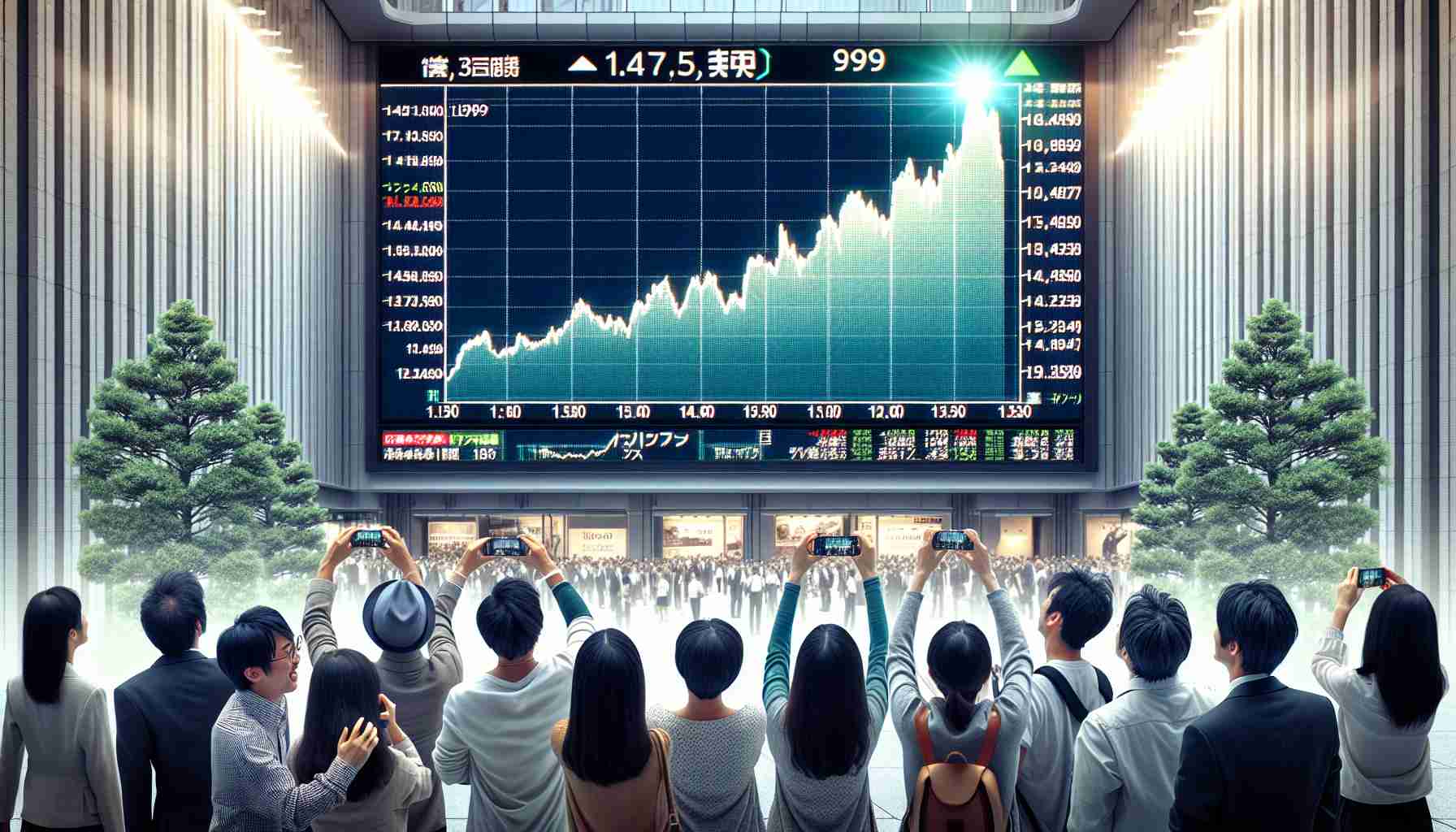In a momentous event, bustling with onlookers wielding their smartphones, the iconic electronic display boards in Tokyo glowed with a historic figure. The Nikkei share average, Japan’s foremost stock index, had just eclipsed a record high that had remained unbeaten since the apex of the asset bubble in December 1989. Captured in photographs by visitors inside a Tokyo building on February 22, 2024, this milestone marked a pinnacle in Japan’s stock market history.
The record-setting figure materialized on the famous electronic screens, serving as a beacon of Japan’s financial resilience and growth. The index’s climb was reflective of robust corporate earnings and investor optimism about the future of the country’s economy. The leap past the previous record was a powerful reminder of the distance the market has come since the bubble period over three decades ago.
These images, snapped by a visitor, were not only evidence of financial triumph but also a significant digital capture of history. The photographs soon became a hot topic, with mainstream media outlets and social media platforms buzzing with updates and commentary on this remarkable financial feat.
Japan’s economic journey, now emblazoned on electronic displays and documented through the lens of smartphones, continued to demonstrate the dynamic nature of global markets. This unforgettable day in Tokyo underlined a revived investor confidence in Japan’s stock market and the larger narrative of economic recovery and prosperity.
Key Questions and Answers:
– What is the significance of the Nikkei Index surpassing its 1989 peak?
The Nikkei Index rising beyond its 1989 peak is significant because it indicates a full recovery and progression of the Japanese stock market from the collapse of the asset bubble in the early 1990s. It symbolizes the success of Japan’s economic reform efforts and the strength of the current Japanese corporations.
– What factors contributed to the rise of the Nikkei Index?
Multiple factors have contributed to the rise of the Nikkei Index, such as robust corporate earnings, structural reforms in Japan’s economy, a favorable global economic environment, monetary policy management by the Bank of Japan, and increased foreign investment.
– What are the key challenges or controversies associated with Japan’s economic growth?
Japan’s economy faces challenges like an aging population, a prolonged deflationary period, stagnating productivity, and political pressures to maintain economic stimulus. Controversies may include debates over the sustainability of fiscal and monetary policies and Japan’s reliance on exports amid global trade tensions.
Advantages and Disadvantages of the Nikkei Index Rising:
Advantages:
– Indicates investor confidence in Japanese businesses and the economy.
– Can stimulate further economic growth and consumer spending.
– A higher stock market can increase the wealth of investors, which could lead to increased investment.
– It may attract more foreign investment in Japan.
Disadvantages:
– A rapidly rising stock market can potentially lead to a disconnection from the real economy if not supported by underlying economic fundamentals.
– There may be increased speculation and risk of a market correction if growth is perceived as unsustainable.
– A stronger yen, which sometimes accompanies a thriving stock market, could make Japanese exports less competitive.
Related Link:
For more information on Japan’s economy and the Nikkei Index, you may visit the official website of the Tokyo Stock Exchange at Japan Exchange Group. Please note that the actual hyperlink should be verified as I am unable to confirm the validity of URLs.
